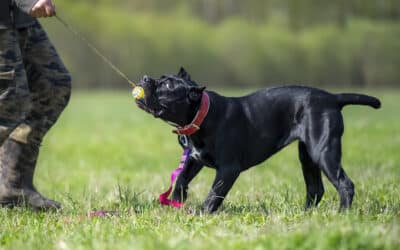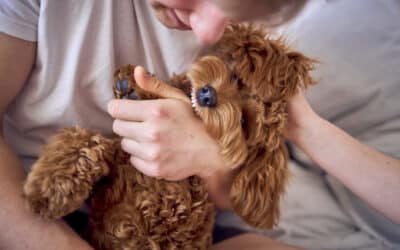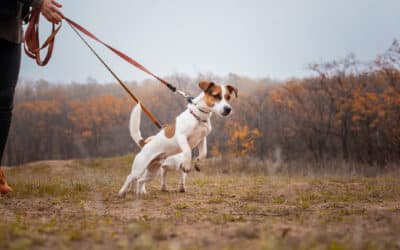Getting your first puppy is one of the most exciting moments in your life. You want to tell the whole world how cute, amazing, and wonderful they are. Your phone is already full of pictures. Trust us, you’ll only fall more in love.
Now that you’ve gotten the world’s best puppy, it’s time to help them become the dog of your dreams! This requires learning how to train them from the right perspective. That’s theirs!
OneMind Dogs has everything you need to help you and your pup master training.
Here are five things that you should focus on teaching your new puppy.
1. What to play with
If you’re wondering how to teach a puppy not to bite, playtime is a good place to start! Puppies are naturally curious, and they bite their littermates all the time as a form of play. But when they’re biting us, it’s not nearly as fun (for the human at least).
Rather than scold them when they bite (which is probably a lot), start teaching them what toys they should engage with instead.
Play is a powerful reward and bonding exercise for owners and their pups. As you get your dog introduced to playing with you using various toys, you’ll discover their favorites and which ones make excellent training rewards.
2. How to go potty outside
Housetraining is definitely one of the things you’ll be most grateful to master. Some puppies take to it right away, while others need some extra guidance. Be patient, and be consistent. These are the golden rules with teaching your dog to go to the bathroom outdoors.
Puppies have small bladders, so they’ll need to head outside every 1 to 2 hours. Make sure you stay consistent, and follow a schedule they can get used to.
And don’t forget plenty of treats and praise when they do their business where they’re supposed to!
Avoid punishing for accidents, as dogs will then learn to poop in secret spots instead (like inside your shoes, argh)!
3. How to walk on a leash
When your dog walks well on a leash, you feel like you can take on the world together. It’s probably one of the things you imagined enjoying together when you decided to get a dog. But puppies aren’t used to the sensation of wearing a collar or harness, so they’re likely to bite, twist, protest and even treat their leash like a toy.
To help counter this, start by teaching them to make eye contact with you. When their focus is on you, they’re less likely to be distracted by their surroundings. Whenever they look at you while walking, give them a treat. You can even teach them a cue word for this behavior, such as “look”.
Stop often, and teach them to pause or sit whenever you aren’t moving. Only treat them when they’re walking well and not pulling. To get more information on teaching your puppy to walk on a leash check out our blog: How to leash train your puppy.
4. Not to jump on people
Meeting new people and dogs is so exciting for puppies! They’re still learning how to interact with other humans and dogs, so jumping is a natural reaction. Unfortunately, this behavior can lead to unpleasant reactions and, sometimes, even bites from less sociable dogs.
Try to get ahead of the action, rewarding your pup as they approach others with their paws on the ground. The goal is to teach them that staying firmly planted leads to treats and positive interaction.
You also want to work on teaching your puppy to be patient when they’re excited. This means slowing down, even sitting for a moment, and rewarding them for waiting.
5. Not to bark
Barking is how dogs, especially puppies, like to communicate. But it can be disruptive and even destructive unaddressed. Teach your puppy that barking is undesirable by rewarding them for being calm.
One mistake new owners make is trying to command their dog to stop barking. But when a dog is barking for attention, any response can reinforce the behavior.
Instead, ignore their barking, then treat them whenever they’re silent (even if it’s for a second!).
Playtime and regular training sessions throughout the day also help lower a pup’s energy, so they’re less likely to bark excessively. If they tend to bark at the same time each day, plan a training session around that time and see if it curbs the barking.
If you want to learn more check out our webinar – 5 common puppy problems and how to prevent them



